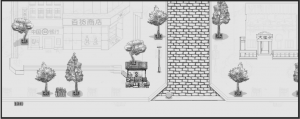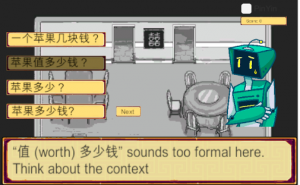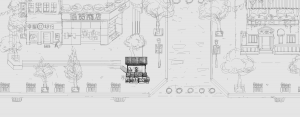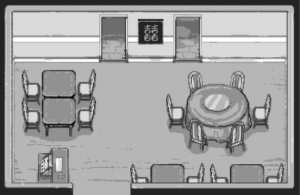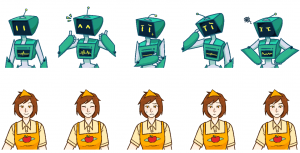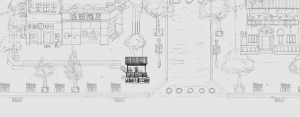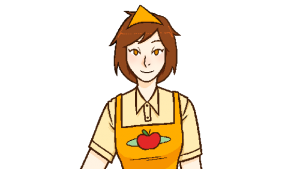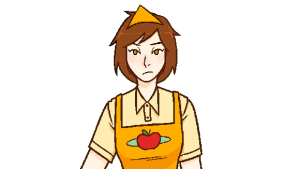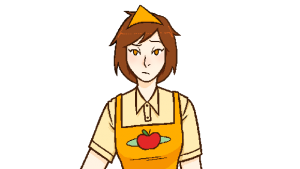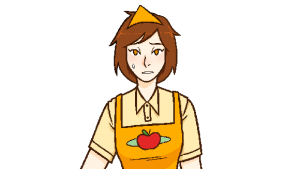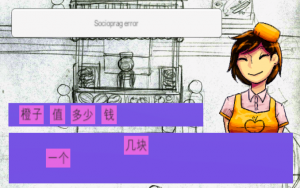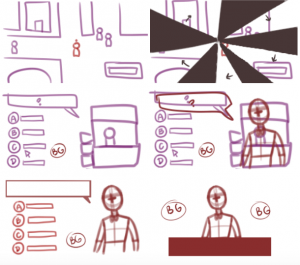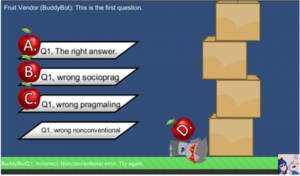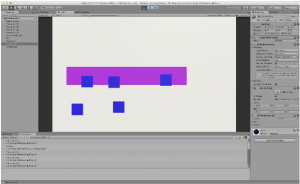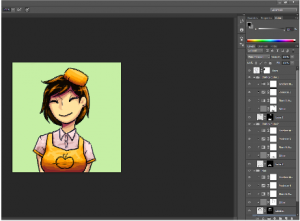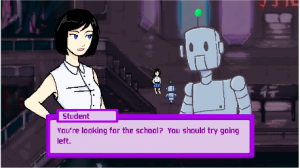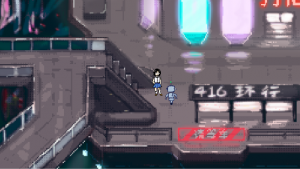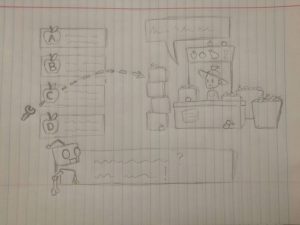WHO WE ARE
Hi everyone! We are Beefy Chicken Stewdios. We will be developing a RPG game for Chinese learning this semester. Our team members are:
- Andrew Chang – Artist, UI/UX Designer
I am Junior in the School of Art with a Game Design Minor. I am mostly an illustrator with a passion for making, playing and modding games.
- Ryan Eckert – Programmer, Interaction Designer
Hello, I’m a Sophmore in the Information Systems major, with a minor in Game Design. I’m mostly a programmer, but I’ve been more of a sound designer on previous projects. (Though since we have a person that can actually make music on the team I’m hoping that the sound for this game will be better than anything I can pull off). I’m excited to work on a “full scale” game that’s more than just a demo, and something that’s hopefully actually going to be played by people outside of demos and playtesting!
- Xiaofei Tang – Producer, Learning Content Developer
I am a PhD candidate in Second Language Acquisition in the Modern Languages department. I believe in the potential of using digital games for language learning. Games can provide a fun immersive environment to practice using language in context. I am very excited to develop a Chinese learning game for my dissertation study entitled “Digital game-based learning for Chinese formulaic expressions”. The study will examine the effectiveness and learner perception of game-based language learning.
- Bryan Tiggs – Artist, Interaction Designer, Programmer
I am Bryan, Game Designer with Beefy Chicken Stewdios, Master of Art and Unity, Manipulator of Sprite Sheets, Devourer of Bugs, Champion of the 2018 Global Game Jam! The elves know me as a senior Biology major, the dwarves know me as a Biomedical Engineering minor, and I am known in the northeast as a potential Game Design minor, and there may be other secret titles you do not know yet, titles so powerful I dare not utter them to mere mortals such as yourself…
- Sarah Wang – Artist, UI/UX Designer
I am a junior Information Systems major with a double in Statistics and a minor in Game Design. Despite my technical background, I have a love of art and illustration, and primarily act as an artist in my projects. I’m looking forward to learning more as both an artist and game designer through this semester-long project!
Game Concept
We are developing a RPG Fetch Quest Game for second language Chinese learners to practice using Chinese in different social scenarios in a fun engaging environment.
Plot Synopsis
You are a robot of an older model who has worked for a restaurant for as long as you have been functional. One day, your boss leaves you temporarily on a trip. “Take a vacation for once!” These words are completely foreign to you, so you open shop anyway. Due to your lack of personal skills, you don’t realize that when customers talk to you about their small requests or problems, they aren’t asking you to fix them. However, you try to help them anyway, and are sent through a series of jobs and tasks before finally returning to the restaurant.
By the end of your journey, you obtain much better social skills and the restaurant’s ratings skyrocket. You’ve even made some new friends along the way, who are now motivated to come to the restaurant and visit!
The main phases of the plot are:
- The exposition — the leaving of the owner, the introduction of your character
- Journey through the world
- More journey
- The return of your owner and a reflection on what you’ve learned
Game Aesthetic
The game will be set in the future, aesthetically lending itself to a combination of VA-11 Hall-A: Cyberpunk Bartender Action and Gravity Rush. Sprites will be stylized and have dramatized poses/actions during conversation.
The layout of the game will be top-down for world traversal, and character sprite conversation overlay (akin to Fire Emblem).
Key conversations (conversations that prompt response options) between the player and NPCs will have a music shift and feel more like an event compared to just normal conversation from non-key NPCs.
Conversation — Chinese Learning
The robot will go through a series of day-to-day scenarios, in order to experience all aspects of society. Each scenario will have a series of Chinese questions that have appropriate answers based on the social connotations (i.e. some answers are too formal, have improper grammar, etc.). Correct answers will grant positive reactions from the sprites, along with continuation of conversation and plot. Incorrect answers will grant various negative reactions from the sprite, depending on what the player chose and why it was incorrect.
Scenarios
- Fruit Vendor
- University
- Bus
|
|
|
End Goal
Our goal is to make a game that engages learners of Chinese to practice Chinese expressions in an immersive environment. One challenge of making an educational game is that we want to motivate learners in a fun gameplay experience, but we also do not want to distract their attention from learning. Our end product will be used in Xiaofei’s dissertation study to test if the game promotes better learning outcomes and learner motivation compared to an online learning environment that delivers the same learning materials but without gaming elements.
